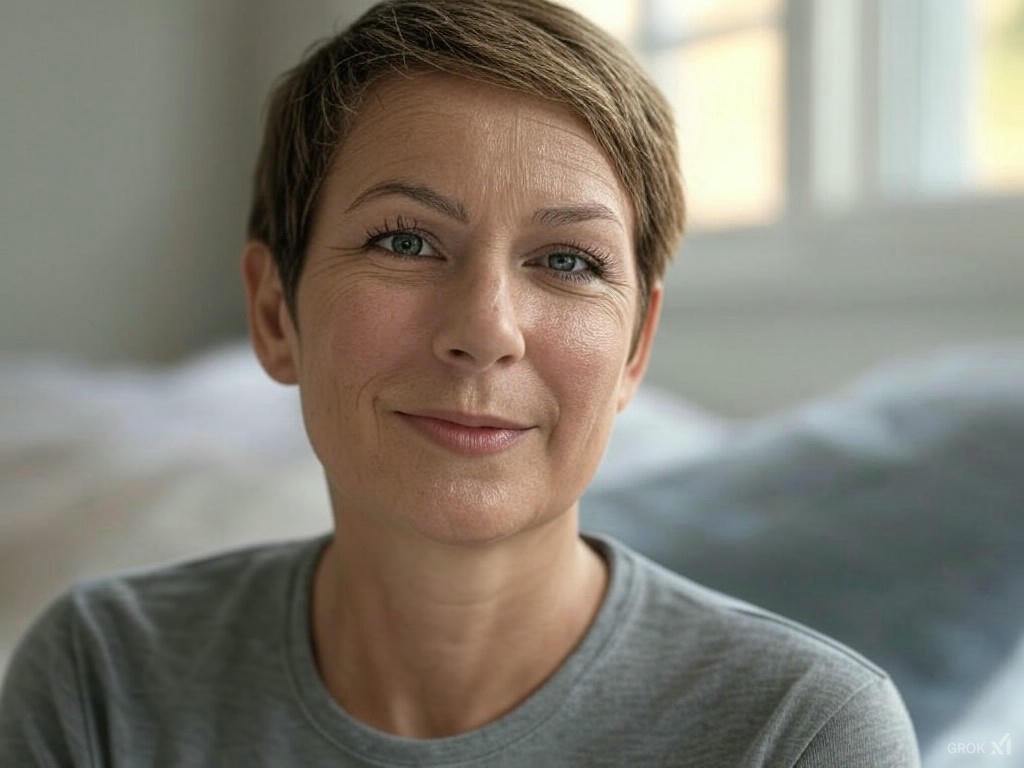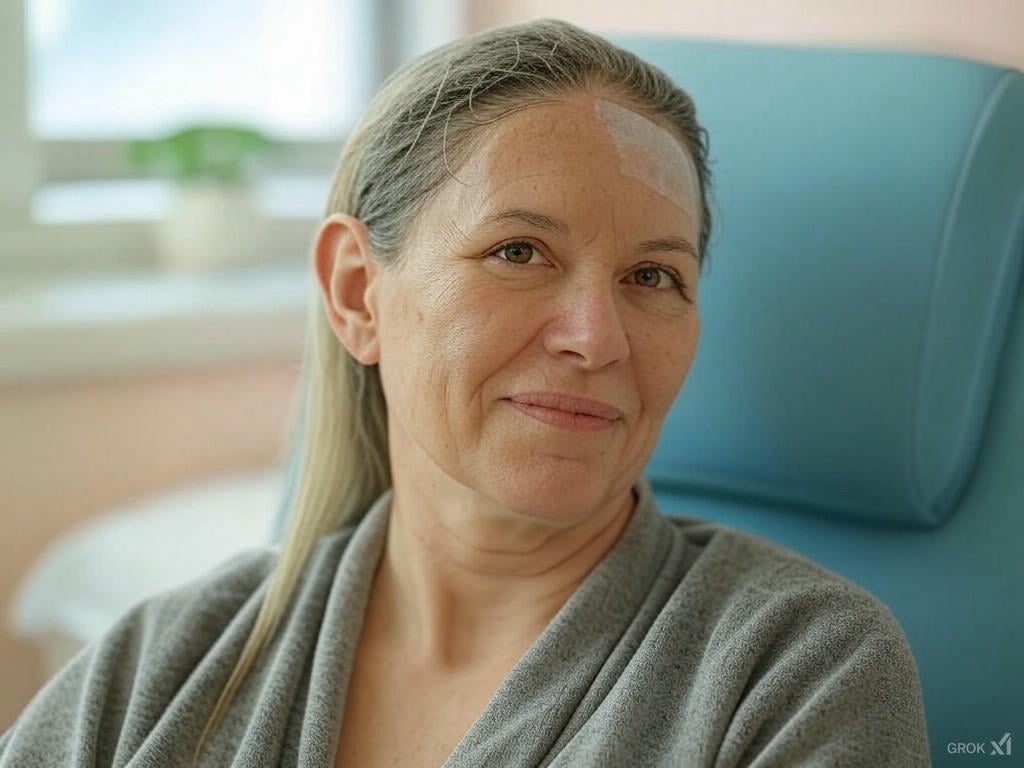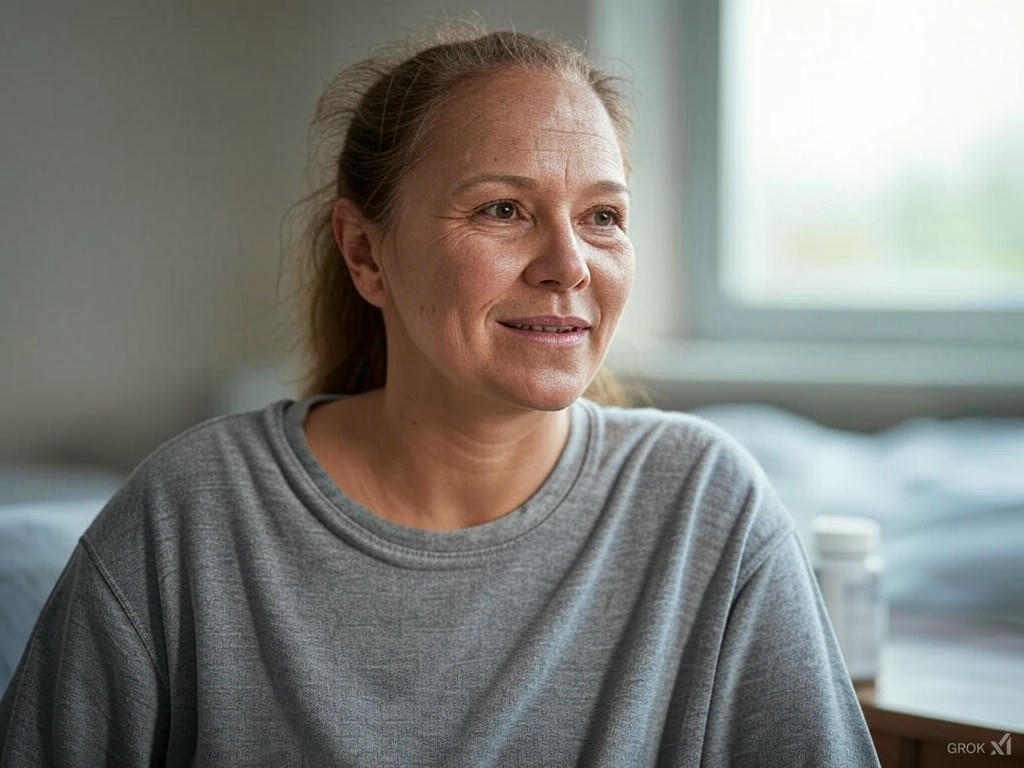1500+ ★★★★★ REVIEWS
Radiotherapy Hair Loss: Causes, Solutions, and Prevention

Radiotherapy, a targeted cancer treatment, can lead to hair loss, or alopecia, when radiation is directed at or near hair-bearing areas, damaging hair follicles within the treatment field. Unlike chemotherapy’s systemic effects, radiotherapy-induced hair loss is localized, with its severity tied to factors like radiation dose, treatment area, and individual sensitivity, potentially resulting in temporary or permanent thinning or baldness. While this side effect can affect patients’ confidence and quality of life, a combination of medical solutions, such as adjusting radiation plans to spare follicles, and practical measures, like using wigs or scalp care, offers ways to manage or mitigate it. This article explores the causes of radiotherapy-related hair loss, effective management strategies, and emerging prevention techniques to support patients through their treatment journey.
Why Does Radiotherapy Cause Hair Loss?
Radiotherapy, a key cancer treatment, causes hair loss by delivering targeted radiation to destroy cancer cells, but it can also damage hair follicles in the treatment area, leading to alopecia. Unlike chemotherapy, which affects the whole body, radiotherapy’s impact is localized, occurring only where radiation beams intersect with hair-bearing skin, such as the scalp, face, or body. The extent of hair loss depends on the radiation dose and duration, with higher doses more likely to cause permanent follicle damage, while lower doses may result in temporary shedding. This article examines the biological mechanisms behind radiotherapy-induced hair loss, shedding light on why it happens and what patients can anticipate during and after their treatment.
Source: National Cancer Institute on Radiation Therapy Side Effects
When Does Hair Loss Begin?
Hair loss from radiotherapy typically begins within two to three weeks after the start of treatment, though the precise onset can vary based on the radiation dose, treatment schedule, and the area being targeted. As radiation damages hair follicles in the treatment field, it disrupts their growth cycle, causing hair to weaken and fall out, often starting with noticeable thinning before progressing to more significant loss. Unlike chemotherapy, which affects hair systemically, radiotherapy-induced hair loss is confined to the irradiated region, such as the scalp or beard area, making its timing closely tied to the initiation of localized radiation sessions. Patients may first observe shedding during daily routines like brushing or washing, with the process continuing throughout the treatment course.
Source: American Cancer Society on Radiation Therapy
Medical and Non-Medical Solutions for Radiotherapy-Induced Hair Loss
Radiotherapy-induced hair loss, confined to the treatment area, can be addressed through a blend of medical and non-medical solutions tailored to its localized nature. Medically, techniques like radiation field adjustments or lower doses, when feasible, aim to minimize follicle damage, while topical treatments such as minoxidil may encourage regrowth post-treatment, though evidence varies. Non-medically, patients turn to wigs, hats, or scarves to cover affected areas, maintaining appearance and confidence, while gentle scalp care with mild products soothes irritation. Emotional support, including counseling or support groups, also plays a vital role in coping with the psychological impact. This article explores these strategies, offering practical and supportive options for managing radiotherapy-related hair loss effectively.
Medical Solutions
Medical solutions for radiotherapy-induced hair loss focus on reducing follicle damage and promoting regrowth. This section examines options like radiation adjustments and topical treatments to address this localized side effect.

1. Minoxidil (Rogaine)
Minoxidil is an FDA-approved topical treatment that may help stimulate hair regrowth after radiation therapy. However, results vary from person to person.
2. Platelet-Rich Plasma (PRP) Therapy
PRP therapy involves injecting a concentration of platelets from the patient’s own blood into the scalp to promote hair regrowth.
Source: American Academy of Dermatology on PRP for Hair Loss
3. Hair Transplant Surgery
In cases of permanent hair loss, hair transplant surgery may be an option to restore hair growth in the affected area.
Non-Medical Solutions
Non-medical solutions for radiotherapy-induced hair loss offer practical and emotional relief. This section explores options like wigs, scalp care, and counseling to help patients cope with this side effect.

1. Mesh Integration System
Mesh integration is a non-surgical hair restoration solution designed for individuals experiencing moderate to severe hair loss. This breathable mesh system integrates natural-looking hair with existing hair or the scalp, offering a seamless and secure result. Hottie Hair Salon & Extensions Store specializes in expert mesh integration services.
Learn more: Hottie Hair Mesh Integration
2. Hair Toppers
Hair toppers provide coverage for thinning or bald spots, especially for those with partial hair loss due to radiotherapy.
Find the perfect topper: Hottie Hair Toppers
3. Wigs and Extensions
High-quality wigs, whether synthetic or made from human hair, offer a stylish and confidence-boosting solution. Hottie Hair Salon & Extensions Store provides premium wigs and extensions tailored for individuals experiencing hair loss.
4. Scalp Micropigmentation (SMP)
SMP is a cosmetic procedure where pigment is deposited into the scalp to mimic the appearance of hair follicles, creating a natural shaved-head look.
Preventing and Managing Hair Loss
While complete prevention of radiotherapy-induced hair loss is not always possible, certain steps can help minimize damage and support regrowth. Preventing and managing radiotherapy-induced hair loss can hinge on gentle hair care, nutrition and supplements, and emotional support. This section highlights using mild products, supporting hair health with diet, and seeking counseling to ease this side effect.

1. Gentle Hair Care
- Use mild, sulfate-free shampoos.
- Avoid excessive brushing and tight hairstyles.
- Limit heat styling and chemical treatments.
2. Nutrition and Supplements
- Maintain a balanced diet rich in protein, iron, and essential vitamins.
- Consider supplements such as biotin, vitamin D, and omega-3 fatty acids to support hair health.
3. Emotional Support
Hair loss can be emotionally challenging. Seeking support from therapists, support groups, or loved ones can help individuals cope during this time.
Radiotherapy Hair Loss Frequently Asked Questions (FAQ)
1. Will my hair grow back after radiotherapy?
Hair regrowth depends on the radiation dose and area treated. In many cases, hair grows back within 3-6 months, but some individuals may experience permanent hair loss.
2. Can I prevent hair loss during radiotherapy?
There are limited ways to prevent hair loss from radiation therapy. However, gentle hair care and scalp cooling techniques may help reduce damage.
3. Is mesh integration safe for sensitive scalps?
Yes! Mesh integration is a non-invasive solution that can be customized for sensitive scalps. Hottie Hair Salon & Extensions Store specializes in safe applications for various scalp conditions.
4. Where can I find high-quality wigs and hair toppers?
Visit Hottie Hair Salon & Extensions Store for premium wigs, toppers, and hair restoration solutions. Explore options here.

Radiotherapy-induced hair loss can be a difficult side effect, but with the right solutions, individuals can regain their confidence and maintain their personal style. Whether through medical treatments, non-surgical options like mesh integration, or premium wigs, there are effective ways to manage hair loss. Visit Hottie Hair Salon & Extensions Store for expert guidance and high-quality hair restoration services.
You must be logged in to post a comment.